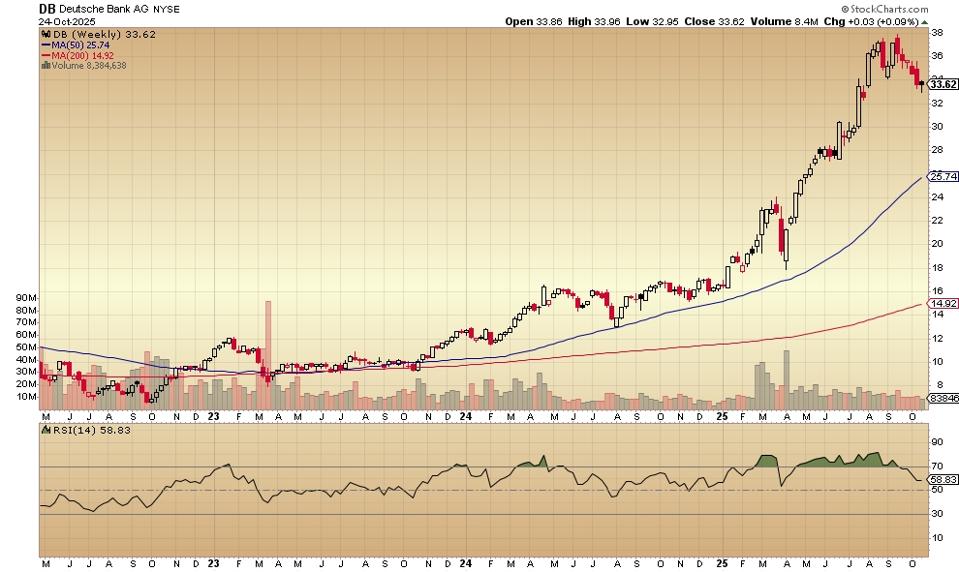The high p/e growth names that get the most attention because of their growth or their potential for growth (according to analysts) are having a nice time. This era will eventually end and that might be sooner rather than later once the Trump tariffs inflation and the lower interest rates inflation really kick in.
In the long run, it might be wise to at least take a look at cheap stocks – that is, those that trade below their book value. That’s the number found when total liabilities are subtracted from total assets. Even now, despite the market’s generally extraordinary valuation, some companies trade for less than they’re worth on the ledger.
Some pay dividend yields that come close to or are greater than the current T-bill rate.
These 4 Stocks Pay 3+% Dividends And Trade Below Book Value
The German bank with global operations has a market capitalization of $64.76 billion. It trades at a 15% discount to its book value with a price-earnings ratio of 10.24. The debt-to-equity ratio is 2.29. Big financial services stocks like this are sensitive to interest rate changes, in Europe, in the US and at central banks worldwide. Deutsche Bank pays a 3.48% dividend.
The weekly price chart shows an uptrend since the late September/early October 2022 low of near $7. The 50-week moving average in May/June 2023 crossed above the 200-week moving average. After touching a high near $38 a few weeks ago, the stock has backed off and the RSI has dropped out of the “overbought” range.
This life insurance company, with corporate headquarters in Radnor, Pennsylvania, has a market cap of $7.57 billion and shares can be purchased at 88% of book value. The price-earnings ratio is 6.97. The debt-to-equity ratio is .60. Lincoln National pays a 4.51% dividend.
The stock bottomed in May 2023 at near $16 and now trades at $39.93. In mid April 2025, the 50-week moving average crossed above the 200-week moving average, a generally positive sign. The relative strenght indicator peaked in April and has now dropped from its “overbought” zone.
The oil and gas exploration company trades at an 11% discount from its book value. The Dallas-based operation has a price-earnings ratio of 6.29. Market cap is $4.89 billion. The debt-to-equity ratio is .58. This year’s earnings are off by 22% and up over the past three years by 13%. Matador offers investors a 3.43% dividend.
The stock hit a peak in November 2022 at just above $70 and now goes for $39.31. The low came in April at near $35. The 50-week moving average in June crossed below the 200-week moving average, not a strong look.
The packaged foods firm offers name-brand items like Birds-Eye, Ledo and Findus. Based in the United Kingdom, the company’s market cap is $1.81 billion. The stock trades at 59% of its book value. The price-earnings ratio is 8.05 and the debt-to-equity ratio is .82. Nomad Foods pays a dividend of 6.30%.
The weekly price chart shows more volatility than the other stocks listed here — with many ups and downs from the 2022 highs to the present. From February through April, the stock managed to trade above both the 50-week and the 200-week moving averages. Now, it trades below both and is re-testing the October 2022 low (indicated by the red-dotted line).
Stats courtesy of FinViz.com. Charts courtesy of Stockcharts.com.
No artificial intelligence was used in the writing of this post.
More analysis and commentary at johnnavin.substack.com.

